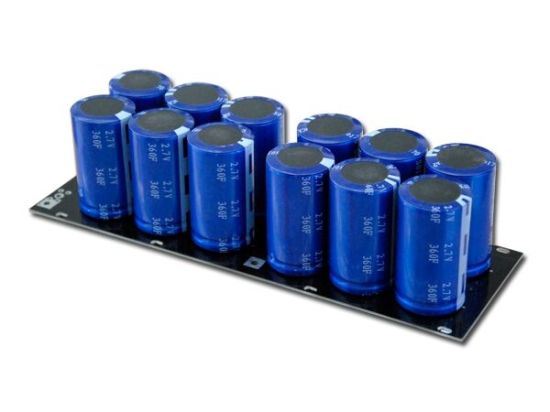Supercapacitors, also known as electrochemical capacitors, electric double-layer capacitors, gold capacitors, and Farad capacitors, are electrochemical components developed in the 1970s and 1980s that use polarized electrolytes to store energy. The following will introduce the reason and working principle of supercapacitors called "super".

1. Super capacitor
Different from traditional chemical power sources, it is a power source with special properties between traditional capacitors and batteries. It mainly relies on electric double layers and redox pseudocapacitors to store electrical energy. However, no chemical reaction occurs during the energy storage process. This energy storage process is reversible, and it is precisely because of this that the supercapacitor can be repeatedly charged and discharged hundreds of thousands of times. The basic principle is the same as that of other types of electric double layer capacitors, which is to use the electric double layer structure composed of activated carbon porous electrodes and electrolytes to obtain super large capacity.
The outstanding advantages are high power density, short charge and discharge time, long cycle life, and wide operating temperature range.
The reason why supercapacitors are called "super":
A supercapacitor can be thought of as two non-reactive porous electrode plates suspended in an electrolyte, on which electricity is applied, the positive plate attracts negative ions in the electrolyte and the negative plate attracts positive ions, effectively forming two capacitive storages layer, the separated positive ions are near the negative plate, and the negative ions are near the positive plate.
Supercapacitors store energy in the separated charges, and the larger the area used to store the charges and the denser the separated charges, the greater the capacitance.
The area of the traditional capacitor is the flat area of the conductor. In order to obtain a larger capacity, the conductor material is rolled very long, and sometimes a special structure is used to increase its surface area. In traditional capacitors, insulating materials are used to separate its two polar plates, generally plastic films, paper, etc. These materials are usually required to be as thin as possible.
The area of the supercapacitor is based on a porous carbon material whose porous structure allows it to reach an area of 2000 m2/g, with some measures enabling a larger surface area. The distance the supercapacitor charges are separated is determined by the size of the electrolyte ions attracted to the charged electrodes. the distance (
The huge surface area combined with the very small charge separation distance makes the supercapacitor have a surprisingly large electrostatic capacity compared with the traditional capacitor, which is also its "super".
Second, the working principle of super capacitor
Supercapacitors are capacitors that use the principle of electric double layers. When an applied voltage is applied to the two plates of a supercapacitor, like ordinary capacitors, the positive electrode of the plate stores positive charge, and the negative plate stores negative charge. Under the action of the electric field generated by the charges on the two poles, opposite charges are formed on the interface between the electrolyte and the electrodes to balance the internal electric field of the electrolyte. The positive and negative charges are on the interface between the two different phases. , arranged in opposite positions with a very short gap between positive and negative charges, this charge distribution layer is called an electric double layer, so the capacitance is very large.
When the potential between the two plates is lower than the redox electrode potential of the electrolyte, the charge on the electrolyte interface will not be separated from the electrolyte, and the supercapacitor is in a normal working state (usually below 3V). If the voltage across the capacitor exceeds the oxidation of the electrolyte When the electrode potential is reduced, the electrolyte will decompose and become abnormal.
Since the charges on the positive and negative plates are discharged by the external circuit as the supercapacitor discharges, the charge response at the interface of the electrolyte decreases. It can be seen from this that the charging and discharging process of supercapacitors is always a physical process without chemical reaction. Therefore, the performance is stable, which is different from batteries that utilize chemical reactions.

